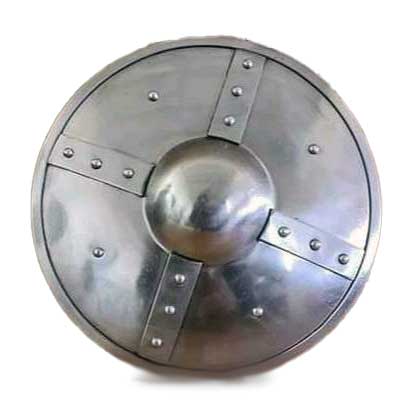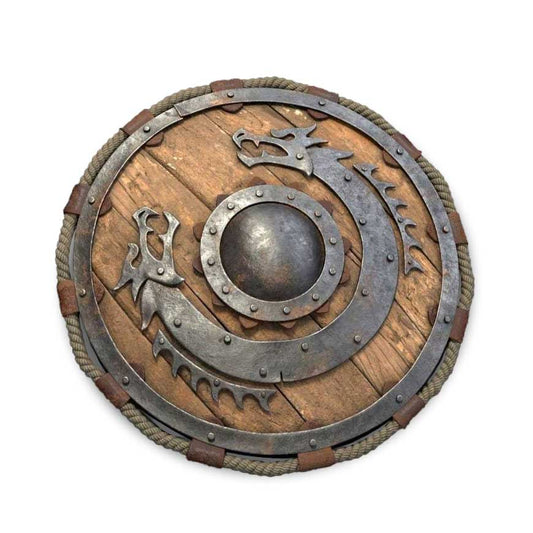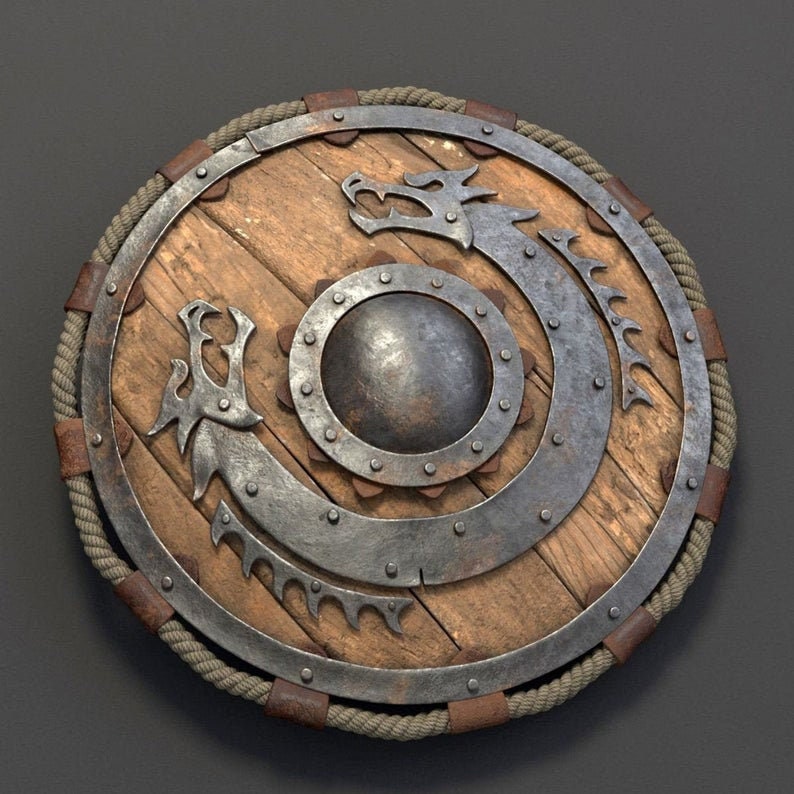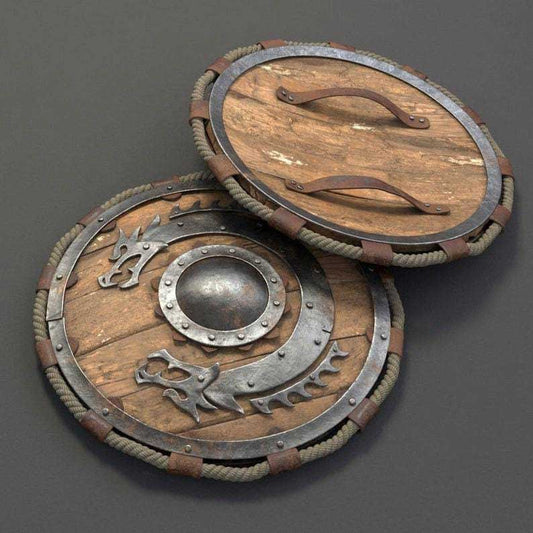At Ervald, you will find a largevariety of viking shieldsfor sale, from deeply traditional pieces that draw on knotwork and historical finds, to modern renderings that pay homage to interests you may have with Viking tradition.
Medieval shields were designed to protect soldiers from direct hits from their enemies' weapons.In the middle Ages, shields were sometimes used as weapons. There are many types of medieval and Viking shields: Kite shield, heat shield, shield shield, targe shield, pavise shield and shield shield.
Shields were usually made from severalmaterials such as wood, leather and metal. The type of wood was defined by the needs of the warrior. For example, the weight of the Viking shield was about 5 kg, the Roman shield was 10 kg, and the Pavise shield was 4-5 kg. The painting of the shield generally represented the country or a family. The shields in our shop are battle shields, they can be used for historical re-enactment battles.
In the same vein, we also offer all kinds ofviking accessories for men, such as beard oils, pearls or even hairdressing tools.
History of Viking shields
In the Viking Age, fighters usedlarge round wooden shields, gripped in their center by an iron boss (umbo). Most Viking shields were made of heavy hardwood, with no metal, because metal was expensive. The more metal components a Viking shield had, the heavier it was to carry and the wealthier its owner was likely to be.
Shields represent one of many cases where literary and archaeological sources disagree on how Viking weapons were constructed.
The Norwegian laws Gulaþing and Frostaþing specify the construction of a shield. The shield should be made of wood with three iron strips and a handle attached to the back with iron nails. A later revision of the law states that the shield must be made of a double layer of boards (tvibyrðr), and the front must be painted red and white.
A few shields have been preserved from the Viking era, including the Gokstad ship shields, which date from the 10th century. The ship was equipped with 32 shields, several of which remained intact. They were made of a single layer of planks joined together, without iron strips, and their facades were painted black and yellow.
Typical Viking shields had a diameter of 80-90 cm(32-36 inches). Some were larger, such as the Gokstad shields, which measured 94 cm in diameter. According to the surviving remains, some shields measured only 70 cm in diameter. We can assume that when a man made a shield, hesized according to his size and his fighting style. A shield should be large enough to provide the desired protection, but no more. A shield that is too small exposes additional lines of attack that the opponent could exploit, while a shield that is too large slows defensive responses and wears out the fighter unnecessarily.
All surviving examples are made of massive planks joined together, although literary evidence, such as the 10th-century Frankish poem Waltharius and the laws of Gulaþing, suggest that shields were made of laminated wood. No archaeological evidence supports this style of building during the Viking Age in the Norse lands.













